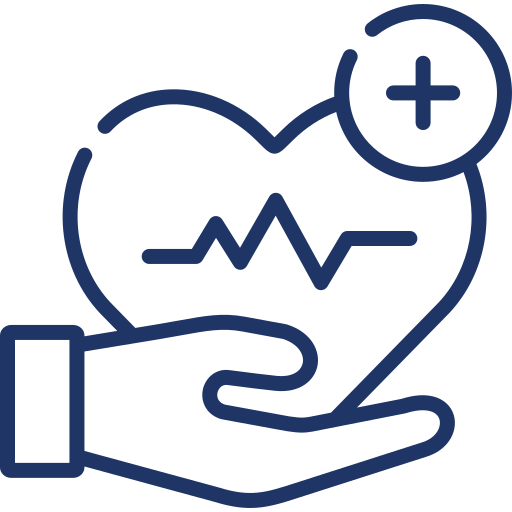Though monkeypox, smallpox, and chickenpox are all members of the poxvirus family, there are some critical differences between them. The three diseases have different levels of severity, which is why it is important to be able to distinguish them. For example, smallpox is much more severe than chickenpox and monkeypox, and can often be fatal. On the other hand, chickenpox typically only results in a mild fever and rash.
It’s crucial to be familiar with the symptoms of each disease so that you can seek medical help as soon as possible if necessary. Here’s everything you need to know about the difference between monkeypox, smallpox, and chickenpox. From symptoms, origins, preventive measures and how to identify between the three.
Similarities between monkeypox, smallpox, and chickenpox
There are several similarities between monkeypox, smallpox, and chickenpox. Even though monkeypox and smallpox belong to the poxvirus family, and chickenpox is caused by varicella-zoster virus, a member of the herpesvirus group, they all cause a rash of small, fluid-filled bumps that can spread from one person to another. And they all can be serious, especially for young children and people with weakened immune systems.
The incubation period for all three diseases is about two weeks. That means it can take up to two weeks from the time you’re exposed to the virus until you start showing symptoms. And all three viruses are believed to spread through close contact with an infected person, either through coughing or sneezing, or by coming into direct contact with the rash.
The difference between monkeypox and smallpox
Smallpox and monkeypox are both part of the orthopoxvirus family, so they’re caused by similar but distinct viruses. However, smallpox is specific to humans while monkeypox is spread from one person to another and by close physical contact with infected animals, like monkeys, rats, and squirrels.
Monkeypox is milder compared to smallpox. It is a self-limited disease with symptoms lasting from two to four weeks. These typically include skin lesions, fever, rashes, headache, body ache, and swollen lymph nodes and may lead to more complications.
Several monkeypox outbreaks have been reported in the United States, United Kingdom, Australia, Europe, and Canada since May 2022. In response, the U.S. Department of Health and Human Services declared the virus a public health emergency, raising concerns around the world.
Smallpox, on the other hand, is unique in that it’s the only infectious disease to have ever been eradicated. The last natural case of smallpox occurred in Somalia in 1977, and since then there have only ever been accidental exposures to smallpox in a laboratory setting.
Until its eradication, smallpox was one of the most devastating diseases known to humanity. Symptoms of smallpox include high fever, chills, backache, headache, and vomiting, followed by the development of a distinctive rash.
The rash starts out as flat red lesions that eventually fill with pus and form scabs. The scabs then fall off, leaving deep scars. Smallpox was often fatal, particularly in young children and infants. Even those who survived were often left with permanent scars or blindness.
Thankfully, smallpox vaccines were developed in the 18th century, and over time vaccination programs led to the eradication of smallpox. Today, the only people who are at risk of exposure to smallpox are lab workers who handle the virus as part of their work.
As a result of vaccination programs and strict safety measures, the risk of a smallpox outbreak is incredibly low. However, because the virus no longer circulates in the population, people today have no immunity to it if they were to be exposed.
Since smallpox and monkeypox are genetically similar, the same medications may be used for treatment. The Centers for Disease Control and Prevention uses the smallpox vaccine to help treat and protect against smallpox, monkeypox, and other diseases caused by orthopoxviruses, including vaccinia virus.
The difference between monkeypox and chickenpox
Monkeypox is not related to chickenpox. Although both cause skin rashes, they are caused by different viruses. Monkeypox is an orthopoxvirus, while chickenpox is a herpes virus.
Despite the fact that both viruses can be spread through skin-to-skin contact and prolonged face-to-face contact, chickenpox is more contagious and spreads more easily than monkeypox.
What’s more, compared to chickenpox, monkeypox is more likely to cause swollen lymph nodes. Chickenpox can also cause an itchy, blister-like rash that usually appears on the chest, back, and face before spreading over the entire body.
It’s worth noting that most cases of monkeypox appear in adults while chickenpox typically affects children. However, adults can get chickenpox if they haven’t been vaccinated—and there have been cases of monkeypox in children too.
The length of sickness also plays a role, too. It will take two to four weeks for monkeypox lesions to resolve completely, whereas chickenpox lesions tend to get better within two weeks.
Steps you can take to avoid getting infected with monkeypox or any other virus
The best way to avoid getting monkeypox or any other virus is to practice good hygiene and be up-to-date on your vaccinations. You should also avoid contact with wild animals, as they can be a source of the virus.
If you live in an area where monkeypox is found, you should take extra care to avoid contact with sick people or animals. You should also avoid contact with their blood, bodily fluids, or skin lesions.
If you do come into contact with someone who has monkeypox, you should wash your hands thoroughly and often. You should also avoid touching your eyes, nose, or mouth. If you must touch them, make sure to wash your hands before and after contact or wear gloves.
It’s also a good idea to avoid sharing personal items with someone who has monkeypox. This includes things like towels, bedding, clothing, and utensils. Make sure to wash them thoroughly after use.
If you think you may have been exposed to monkeypox, you should contact your healthcare provider immediately. They will be able to assess your risk and determine if you need to be quarantined or treated.
Always follow preventive measures to stay safe against these contagious diseases. In case you have a fever and you notice an unusual rash on your skin, don’t panic. The best thing you can do is to get tested. See a doctor or visit any Nao Medical location where you can find help whether you have smallpox, chickenpox, or monkeypox.





